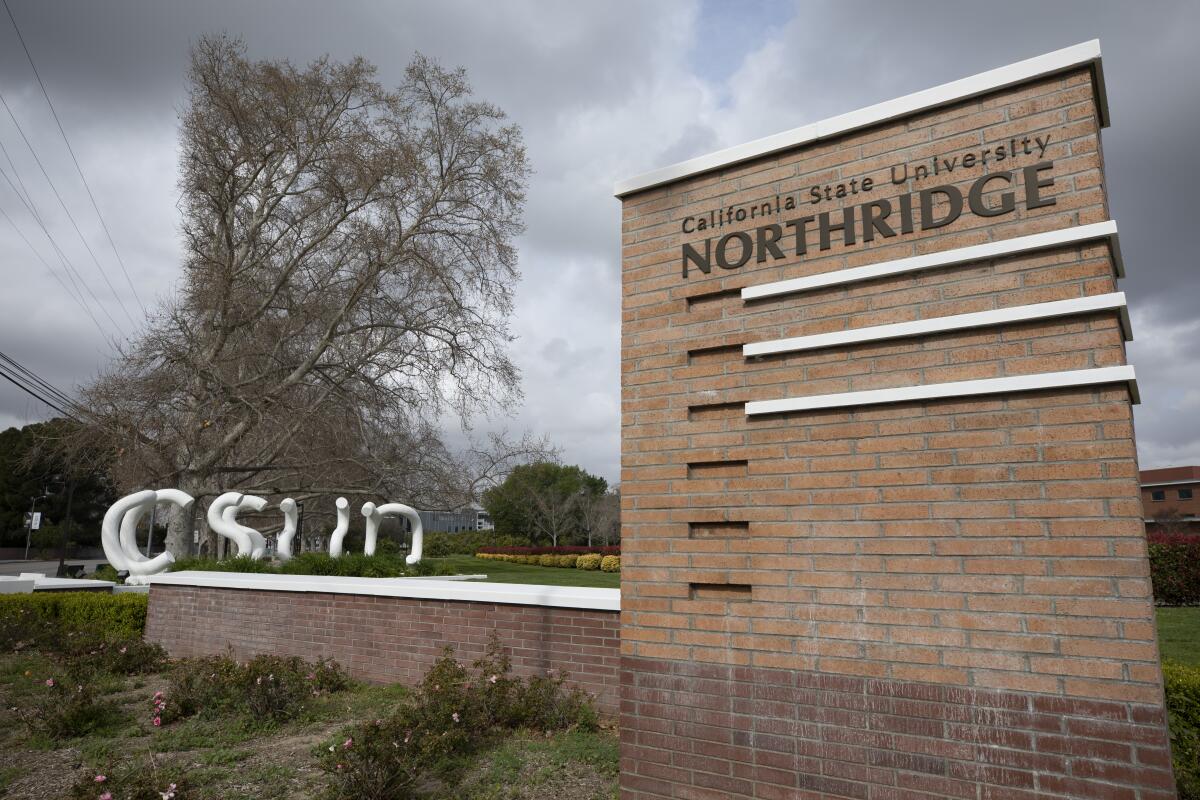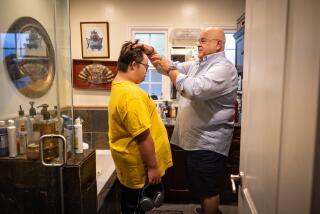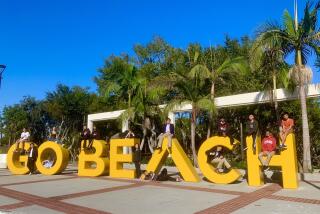CSUN is getting $265 million in COVID relief, more than any university in California

- Share via
A visit to the Cal State Northridge health center shows how an unprecedented flow of federal dollars in pandemic relief is being spent at the campus.
As the pandemic threat lingers, one office has been converted into a state-of-the-art, specially ventilated isolation room to test and treat patients possibly infected with COVID-19 or other airborne illnesses. Patients enter and exit to the outdoors, avoiding other areas and reducing exposure risks. The exam room cost $219,000.
Without the federal funds, “we would not have been able to do this. Absolutely not,” Jason Wang, the university’s senior director of physical plant management, said of the health center upgrade.
Cal State Northridge stands alone as the recipient of the most federal pandemic relief aid of any public or private university in California, with an influx of $265 million that is funding needs-based student grants, backfilling massive revenue losses, improving campus health and safety measures and addressing myriad needs, including technology upgrades.
Throughout California, three waves of relief money are pumping more than $9.5 billion to public and private colleges and universities, by far the most of any state.
Nearby, a campus warehouse contains stacks of cartons containing masks, wipes, dispenser stands for sanitizers, digital thermometers and plastic dividers for desks. Throughout campus buildings, corridor floors are now dotted with large, round red stickers urging everyone to keep to the right while walking to minimize face-to-face contact.
All of that will improve safety and ease concerns as the campus readies for a partial or full return to in-person classes in the fall, officials said. “We will simply be prepared for future health and safety needs, which are inevitable,” said Carmen Chandler, a campus spokesperson.
Aid formula favors Cal State Northridge
CSUN is the top aid recipient because of its large student enrollment — 38,815 last fall — and because 54% of its undergraduates are eligible for federal Pell Grants for low-income students. Also, the university gets extra funding as a federally designated Hispanic-serving institution with a 51% Latino student body. As required by federal law, nearly half of the aid will become grants for needy students to offset costs of living and learning. The school can use some of the rest to fill in for massive pandemic-related revenue losses — at least $40 million this year — and to cover the refunds it had to give students for unused housing and parking fees.
The aid also funded online teaching technology, upgraded ventilation in scores of campus buildings, improvements at health facilities and expanded mental health counseling for students. The university purchased more than $1 million worth of plastic desk dividers, masks, sanitizers and wall-hung digital thermometers — all meant to slow the spread of COVID-19 .
The campus would have suffered “devastating” cutbacks if not for the federal money, said Colin Donahue, Cal State Northridge’s vice president for administration and finance and its chief financial officer.
“I don’t know how we would have weathered that storm,” he said, noting that no one had anticipated that the pandemic shutdown would have lasted three semesters. “Without these funds, we would certainly not be in a position to serve our students in an appropriate manner.”
Cash payments to students
Students say they appreciate the help. Some of the neediest are expected to receive what could total $2,600 from the first two rounds of federal funding, with more to come from the third round authorized by the American Rescue Plan signed into law in March. The payments were made automatically based on previous income information and did not require new applications.
“I think a lot of our students have definitely needed that in the coronavirus pandemic and have benefited from it. It did make a difference,” said Deion Turner, who just finished serving as this year’s student government vice president.
Many students lost jobs during the health emergency and had trouble with expenses for housing and food. The extra aid was “really a great thing,” he added.
Turner, a Los Angeles resident who graduated in May, received $600 in COVID-19 aid to cover books for his final term and car payments.
In the first two rounds, totaling about $127 million, $53.2 million went to student grants, according toan accounting provided by the campus.
An additional $31 million provided refunds to students for housing, meals and parking programs and filled in for various lost revenues, including a decline in the amount of tuition paid, worsened by lower enrollment of international students during the pandemic. That federal money even helped the university avoid possible defaults on construction bonds for dorms and garages, officials said.
About $14.7 million was for improved technology for online teaching and remote communication, such as better Wi-Fi connections, computers and teaching software for faculty, staff and students.
The sudden shift to remote learning and working “would have been in dire straits” without that new equipment, said Edith Winterhalter, associate vice president for budget and strategic business operations.
The campus is deciding how to use its most current appropriation and will have about a year after receiving its last share to spend the funds. Money does not arrive from Washington in a lump payment, but campuses must submit documentation to draw down against their award amounts. After distributing about $65 million of the funding to students, the campus will have about $73.5 million to spend, equivalent to 15% of its $491-million operating budget in 2020-21.
On a recent campus tour, most of the spending was not visible, such as bolstering counseling and home technologies for teaching. But in 31 campus buildings, there was significant retrofitting to improve ventilation. And many classrooms are being equipped with portable air-filtering units, the size of window air conditioners, that sit on the floors.
Larry Gordon is a staff writer for EdSource, a nonprofit, nonpartisan journalism organization reporting on education in California. EdSource data journalist Daniel J. Willis contributed to this report.
More to Read
Sign up for Essential California
The most important California stories and recommendations in your inbox every morning.
You may occasionally receive promotional content from the Los Angeles Times.










